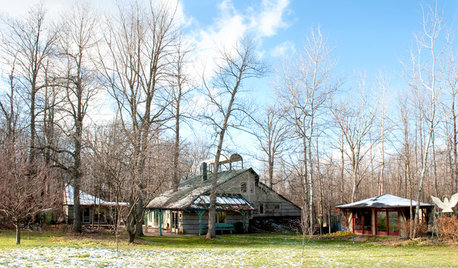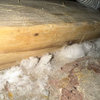House Settling - When to mend - When to worry
infohound
21 years ago
Featured Answer
Sort by:Oldest
Comments (17)
trekaren
21 years agobulldinkie
21 years agoRelated Professionals
Bartlesville General Contractors · Fitchburg General Contractors · Fort Pierce General Contractors · Klahanie General Contractors · Kyle General Contractors · Monroe General Contractors · Summit General Contractors · Waterville General Contractors · Wheeling General Contractors · University Park Home Builders · Landover Home Builders · New River Home Builders · Knik-Fairview Home Builders · Milford Plumbers · Miller Place Plumbersfishcanswim
17 years agokimcoco
16 years agodebra294
16 years agolucy
16 years agologic
16 years agoeuroclydon
16 years agolucy
16 years agologic
16 years agobob_m_texas
15 years agojim_i_am
15 years agosilent1pa
15 years agopjb999
15 years agosilent1pa
15 years agoGammyT
15 years ago
Related Stories

MOST POPULARWhen Does a House Become a Home?
Getting settled can take more than arranging all your stuff. Discover how to make a real connection with where you live
Full Story
SELLING YOUR HOUSE15 Questions to Ask When Interviewing a Real Estate Agent
Here’s what you should find out before selecting an agent to sell your home
Full Story
SELLING YOUR HOUSEHow to Decorate for the Holidays When Your Home Is for Sale
You can make your home appealing to potential buyers and still celebrate the season. Here are 7 tips to keep in mind
Full Story
CONTRACTOR TIPSBuilding Permits: When a Permit Is Required and When It's Not
In this article, the first in a series exploring permit processes and requirements, learn why and when you might need one
Full Story
LIFEWhen You're Suddenly Solo at Home
Whether you stay in a home alone or move on, these strategies from professional organizers can help you with the process
Full Story
LIFEWhen Your Tastes Clash: How to Design and Decorate as a Couple
Want to keep the peace? Work with both of your styles when remodeling, decorating or building new, for a home that feels right to all
Full Story
LIFEWhen Design Tastes Change: A Guide for Couples
Learn how to thoughtfully handle conflicting opinions about new furniture, paint colors and more when you're ready to redo
Full Story
WORKING WITH PROSGo Beyond the Basics When Interviewing Architects
Before you invest all that money and time, make sure you and your architect are well matched beyond the obvious levels
Full Story
REMODELING GUIDES5 Ways to Protect Yourself When Buying a Fixer-Upper
Hidden hazards can derail your dream of scoring a great deal. Before you plunk down any cash, sit down with this
Full Story
LIFEHow to Stay Relaxed When Hosting Overnight Guests
Make sure their visit goes smoothly by following these simple steps
Full Story







worthy